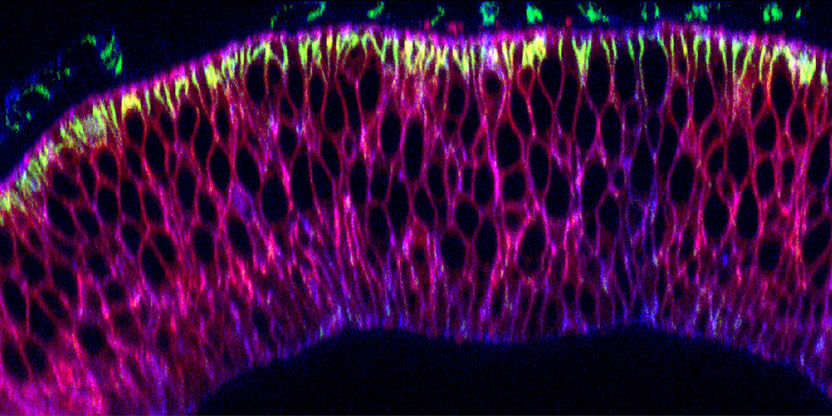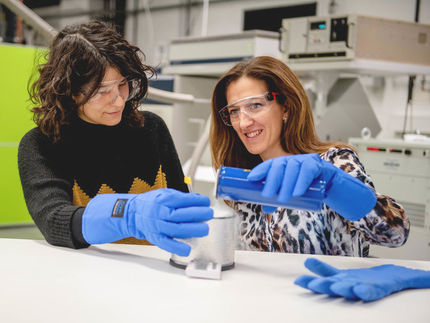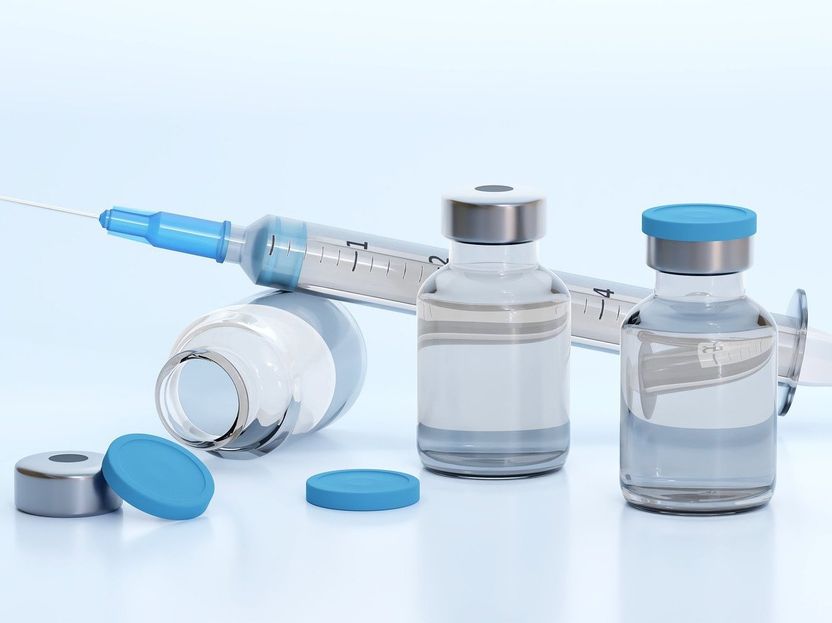Relocation of Proteins with a New Nanobody Tool
Researchers at the Biozentrum of the University of Basel have developed a new method by which proteins can be transported to a new location in a cell. The novel tool enables scientists to study the function of proteins depending on their position by using nanobodies. The tool can be used for a wide range of proteins and in various areas of developmental biology.

Nanobodies (pink) in the wing precursor of a fruit fly larva.
University of Basel, Biozentrum
The research group of Markus Affolter is investigating the growth of the wings of the fruit fly Drosophila to understand which processes control organ development and growth. Proteins that control such growth processes are the focus of their investigations. In this context, not only the composition of the proteins is important, but also their position which can influence protein function. The new nanobody tool of the Affolter research team allows the relocation of proteins and thus to study their function in a position-dependent manner.
Novel tool for all GFP-bound proteins
A repositioning of the proteins of interest requires a labeling with the green fluorescent protein (GFP). Subsequently, so-called anti-GFP nanobodies, small antibody fragments derived from camels, are then used to bind and to move the GFP-tagged proteins to a new site in the living organism. The nanobody itself is linked to a signal protein that defines the destination of the target protein. Thus, the nanobody forces the GFP-tagged protein into a new position. “Even if we do not know exactly the composition and structure of a protein, we can label it with GFP and control the destination site by using nanobodies,” says Stefan Harmansa, one of the two first authors.
Artificial relocation with nanobodies
The researchers were able to transfer proteins to a new site, internal or external to the cell. “By transporting proteins to new locations, we can observe whether their function changes or not and whether development is affected,” says Ilaria Alborelli, also one of the first authors of the study.
So far, scientists have been restricted in relocating proteins. The new nanobody tool, however, makes it possible to easily and efficiently change the position of all GFP-tagged proteins and thus explore their functions. The Affolter group has already been successful in investigating the growth of Drosophila wings using this nanobody tool. By interfering with the signaling molecule Dpp in a position-dependent manner, the scientists have been able to show more precisely its influence on wing growth.
In the future, the new nanobody tool can be used for a wide variety of studies on organ growth and in various other areas of developmental biology. With this concept, the growth and the development of different cells and organs can be investigated in more detail.
The Affolter team also faces many new challenges. “We as developmental biologists are still confronted with urgent questions such as how an organism knows when it has to stop its growth. To put it succinctly, how does it work that arms or legs stop growing when they reach their correct length?”, says Stefan Harmansa. In the future, the novel tool may contribute to a better understanding of how organ growth is regulated.



















































